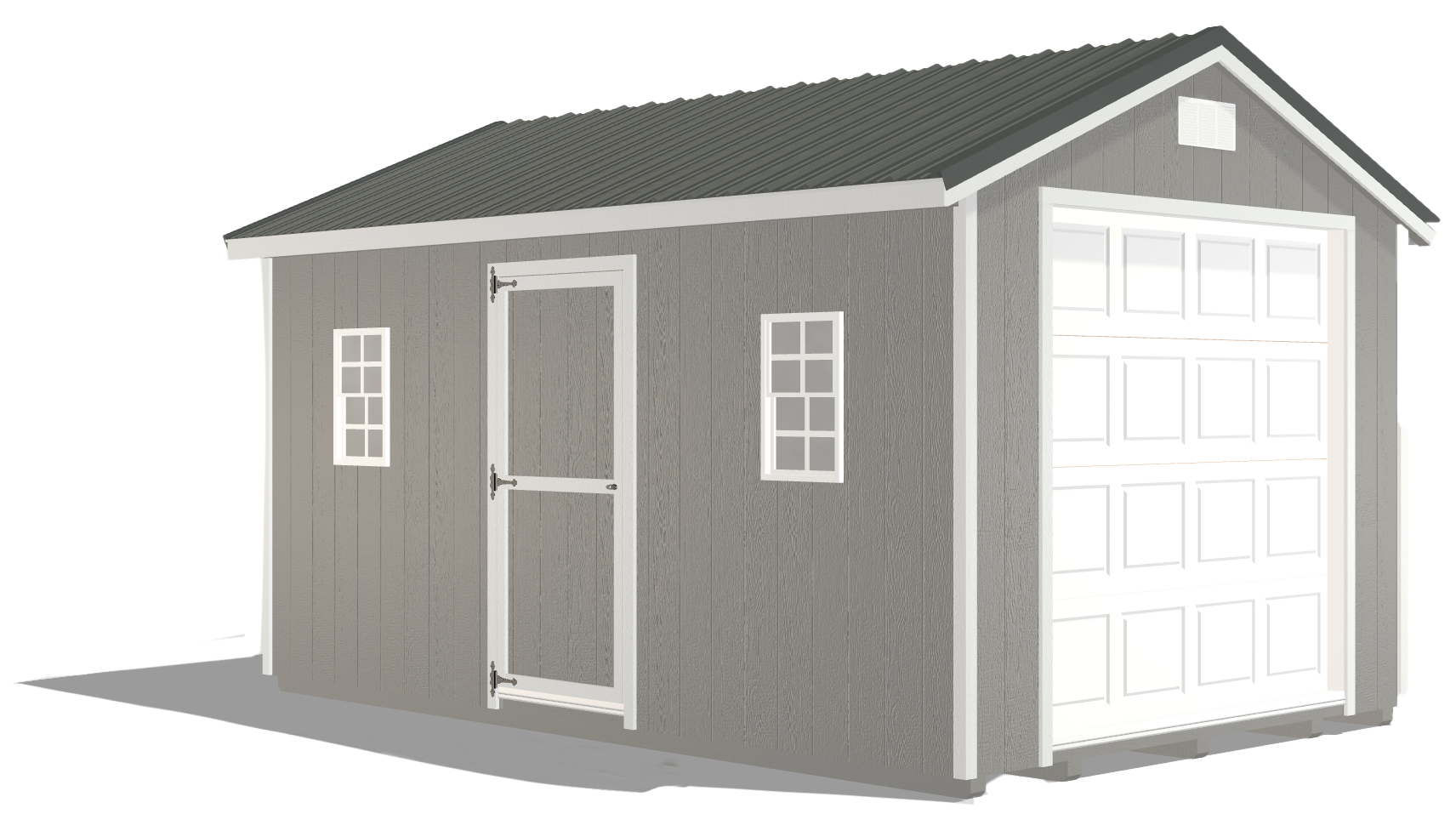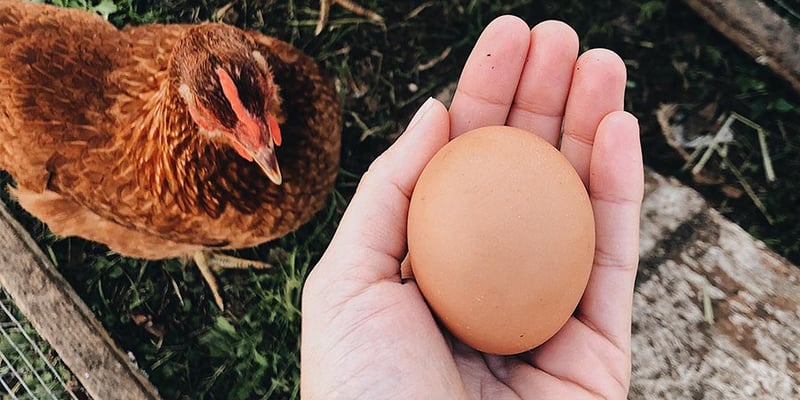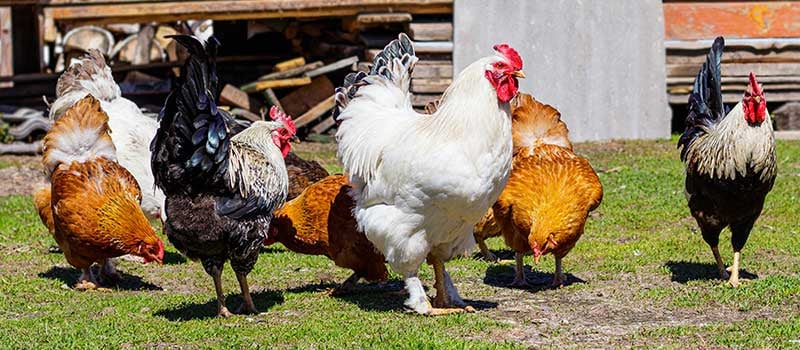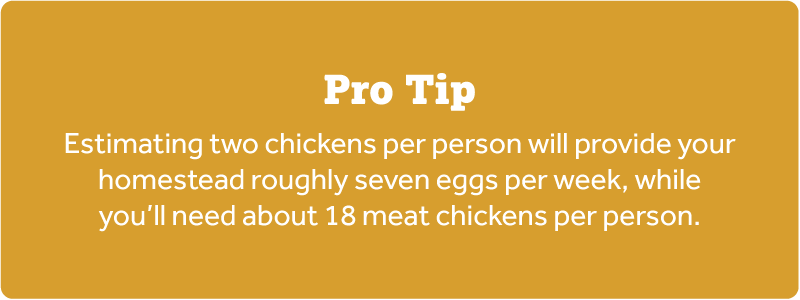What To Know About Raising Homestead Chickens for Eggs or Meat
by Dakota Storage Buildings, on April 05, 2022
Whether you want eggs, meat, or both will impact your breed selection and setup for raising homestead chickens.
Many homestead chicken owners begin with the desire for those delicious farm-fresh eggs. With self-sufficient living as a goal, homesteaders may consider whether they should also raise chickens for meat. Laying hens and meat chickens are typically housed separately to accommodate their different needs, however dual-purpose chicken breeds may offer homesteaders more flexibility.
Let’s take a look at your options for raising chickens, the differences between breeds, and how to best house and care for them — whether your end game is eggs, meat, or both.
Laying Hens, Meat Chickens, or Dual Purpose?
While it seems like a linear solution to raise chickens for eggs, then butcher the same chickens for meat, it’s not quite that simple. It’s often advised that homesteaders raise different chickens to serve their intended purpose. Laying hens and broiler chickens have different needs and life spans.
Laying Hens:
- Need appropriate space and coop for laying eggs
- Nutritious, balanced diet with some protein and calcium
- Begin laying eggs around 16 weeks (best egg production lasts 1–3 years)
- Meat may be tougher if butchered after egg production ends
- Leaner chickens means breast meat will not be as thick
- Tendency to explore and use chicken run; enjoy fresh grass
Meat (Broiler) Chickens:
- Different space requirements (½ sq-ft/bird) and contamination risks
- High protein diet to promote rapid growth
- Usually butchered around 8 weeks (prior to egg production)
- May be male or female
- Carry more weight for thicker breast meat
- Lower tendency to move around and explore run area
A third option, dual-purpose chickens, have been bred to produce the best quality of meat and eggs. They lay more eggs than a broiler, yet carry more meat than a layer hen. With the dual purpose option, homesteaders may opt to raise chickens for eggs and process the roosters after 6-9 months.
Dual-purpose Chickens:
- Similar space requirements to laying hens
- Can eat same diet as layers
- Usually butchered later than broilers
- May be male or female
- More flavor but less tender and less meat than broilers
- Lower tendency to move around and explore run area
Which homestead chicken breed is right for you?
If you decide that raising chickens for eggs is best for your homestead, you’ll want to select chickens that have been bred specifically for laying eggs. These breeds tend to have a slighter build, since most of their energy goes toward laying eggs. On the other hand, if you’re looking to maximize the amount of meat per chicken, a broiler or dual breed may be a better selection. It’s a good idea to research the differences associated with various chicken breeds to decide which is best for you.
Popular Egg Laying Breeds:
- Hybrid breeds such as Golden Comets and Cinnamon Queens may lay up to 320 eggs in their first year of laying.
- White & Brown Leghorns and Rhode Island Reds are common chicken breeds that lay between 280 and 300 eggs.
- Red Jungle Fowl, Cream Legbar, and Easter Eggers are popular laying breeds with high yields as well.
Meat Chicken Breeds
- Cornish Cross chickens are hybrid meat chickens that reach butchering size at 6 weeks.
- Freedom Rangers may be heartier but grow at a slower rate that Cornish Cross.
- Dark Cornish is another popular meat chicken breed.
Dual-Purpose Breeds
- Many classic barnyard chickens and heritage breeds are considered dual purpose, including Buff Orpintons and Speckled Sussex Hens (180–240 eggs/year).
- Black Australorp and Barred & White Rock breeds are known to lay 200-280 eggs per year.
- Plymouth Rocks are known for their docile nature, beautiful variety of colors, and respectable egg yield of 260 eggs per year.
Which setup is best for egg layers or meat chickens? Can you keep both in the same coop?
No matter which breed of chicken you choose and what you decide your primary intentions are for raising chickens, you will need a coop to keep them safe from elements and predators. If you do not go with a dual-breed and want to raise both layers and boilers, you’ll need two coops or a sealed wall to keep the breeds separated. If you don’t have ample space for this, free-ranging may be an option, however this is not ideal since it may be difficult to keep their food separated.
Choosing a dual-breed may solve this dilemma. As you decide what you want to do for your homestead, both free range or enclosed coop are viable options. One just might be a better fit for your space, goals, or preferences for eggs, meat, or both.
Conclusion
As you weigh the pros and cons of raising laying hens, meat chickens, dual-purpose — or even all of the above, it’s important to learn as much as you can about the needs of all three in order to make an informed decision. When it comes to homestead chickens, you’ll want to consider what’s best for your family’s needs. (Pro Tip: Estimating two chickens per person will provide your homestead roughly seven eggs per week, while you’ll need about 18 meat chickens per person.)
Whether or not you have any interest in raising meat chickens, our free download, The Beginner’s Guide to Homestead Chickens, is a handy resource to learn more about owning and raising egg-layers. It’s full of information about where to buy various chicken breeds and other tips for raising homestead chickens.




























